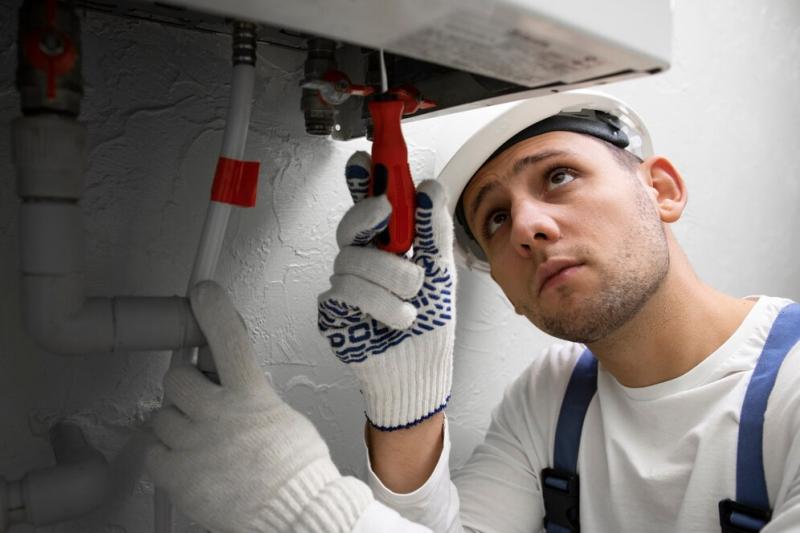How to Remove Sludge from Radiators and Central Heating Systems

Sludge buildup in radiators and central heating systems is a common issue faced by homeowners, especially in older heating systems. This sludge, primarily composed of rust, dirt, and other debris, can cause inefficiencies, cold spots, and even system breakdowns. Understanding how to deal with sludge in radiator and employing proper cleaning techniques is essential to keep your heating system running efficiently and cost-effectively.
In this article, we will explore various aspects of sludge removal, including radiator sludge removal how to, available central heating sludge remover products, and tips on how to effectively clean radiator sludge.
What is Sludge in Radiators?
Over time, water circulating in central heating systems causes internal components like radiators and pipes to corrode. The result is a buildup of rust and dirt, forming a thick, muddy sludge. This sludge in radiator systems prevents proper water circulation, leading to inefficient heating, cold spots, and excessive energy use.
Signs of Sludge in Your Radiator
Cold patches on the radiator, especially at the bottom
Unusually noisy radiators or boilers
Increased energy bills
Radiators taking longer than usual to heat up
Why Sludge Removal is Essential
Sludge buildup can cause serious damage to your central heating system if left unchecked. It can block pipes, valves, and pumps, resulting in expensive repairs. Moreover, it reduces the overall efficiency of your heating system, leading to higher energy consumption and costs. Regularly cleaning and maintaining your radiators will prolong the life of your heating system.
Radiators Sludge Removal How To
One of the most common questions homeowners have is, radiators sludge removal how to effectively clean their systems? There are several methods available, ranging from DIY solutions to professional services. Here are the main approaches:
Manual Bleeding of the Radiator
Turn off the heating system.
Use a radiator key to bleed the radiator by turning the valve and letting trapped air and water escape.
This helps relieve pressure and may improve heating performance, but it won’t remove sludge.
Flushing the Radiator
Remove the radiator from the wall after turning off the system.
Take it outside and use a hose to flush water through the radiator, pushing out any debris or sludge.
This is a simple and cost-effective method, but it can be messy and time-consuming.
Powerflushing
This is a professional service where a high-powered flushing unit is connected to the system to blast out the sludge and debris.
Powerflushing is highly effective and ensures a thorough cleaning, but it is more expensive than manual methods.
For professional services, you can visit Powerflush Services for expert advice and service options.
Central Heating Sludge Remover: How to Use It
Using a central heating sludge remover is one of the easiest and most effective ways to treat sludge buildup. These chemical solutions are specifically designed to break down and dissolve the sludge, allowing it to be flushed out of the system. Here’s how you can use them:
Turn off the heating system and allow it to cool.
Add the sludge remover directly into the system via the radiator or the filling loop.
Let the solution circulate through the system for a specified amount of time, as recommended by the manufacturer.
Flush the system afterward to remove the dissolved sludge.
Refill the system with clean water and an inhibitor to prevent further corrosion.
Clean Radiator Sludge: DIY vs. Professional Help
Deciding between a DIY approach or hiring professionals depends on the severity of the sludge buildup and your comfort level with handling the task.
DIY Radiator Sludge Cleaning
You can perform a clean radiator sludge process yourself using basic tools and readily available products. As mentioned, manual flushing or using chemical sludge removers can be effective for minor sludge buildup. However, if you have limited experience, this task may take considerable time and effort.
Professional Radiator Sludge Cleaner Services
If the sludge buildup is extensive or you want guaranteed results, hiring professionals for radiator sludge cleaner services is a smart option. Powerflushing, performed by experts, is a comprehensive solution that ensures the entire system is cleaned thoroughly. Many companies offer this service, including Powerflush Services.
Radiator Sludge Removal Cost: What to Expect
The radiator sludge removal cost varies based on the size of the system, the amount of sludge, and the method used.
DIY chemical flushes can cost around £20-£50 for a bottle of sludge remover, plus any additional tools required.
Professional powerflushing typically ranges from £300 to £700, depending on the size of your central heating system and the company you hire.
Though powerflushing may seem expensive, it can save you significant money in the long run by improving efficiency and preventing costly repairs.
How to Remove Sludge from Central Heating Systems
If you're wondering how to remove sludge from central heating, follow these steps for optimal results:
Turn off the heating system and allow it to cool.
Drain the system using the drain valve.
Introduce a sludge remover into the system, either through a radiator or the filling loop.
Let the solution circulate for the recommended time.
Flush the system to remove all the dissolved sludge.
Refill the system with fresh water and a corrosion inhibitor.
For best results, consider combining chemical solutions with a professional powerflush every few years. This will keep your heating system in top shape and extend its lifespan.
Preventing Sludge Buildup in the Future
To prevent sludge from building up again, it’s essential to perform regular maintenance on your heating system:
Use a corrosion inhibitor after every clean.
Have your system checked annually by professionals.
Install a magnetic filter to trap rust particles and prevent them from circulating through the system.
Conclusion
Sludge in radiators and central heating systems is a significant problem that can lead to inefficient heating and increased costs. However, with proper maintenance and by using the right tools, you can easily clean radiator sludge, reduce your radiator sludge removal cost, and improve the efficiency of your system. Whether you opt for DIY methods or professional help from companies like Powerflush Services, ensuring your system stays sludge-free will save you money in the long run and keep your home warm during the colder months.





Comments